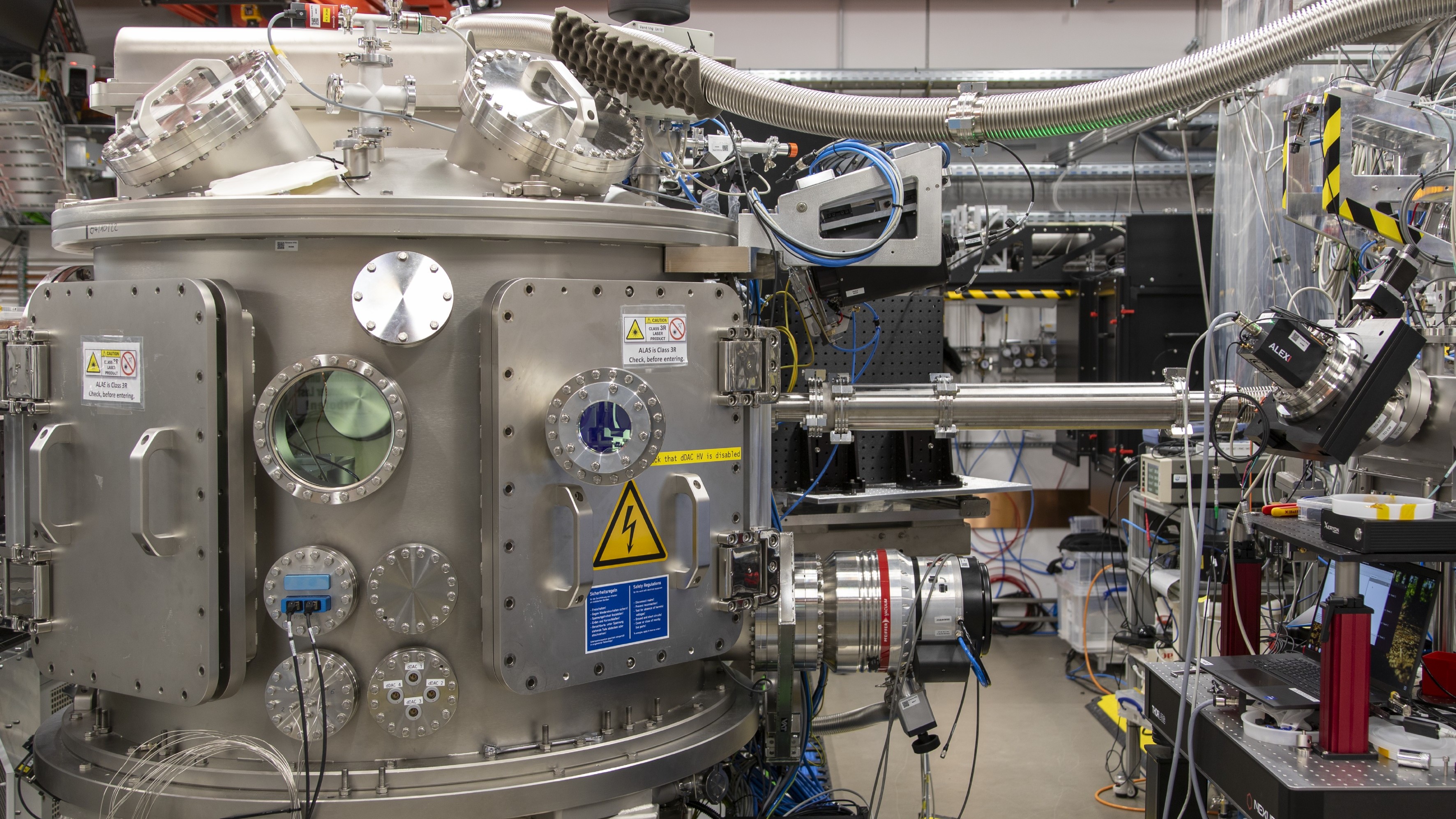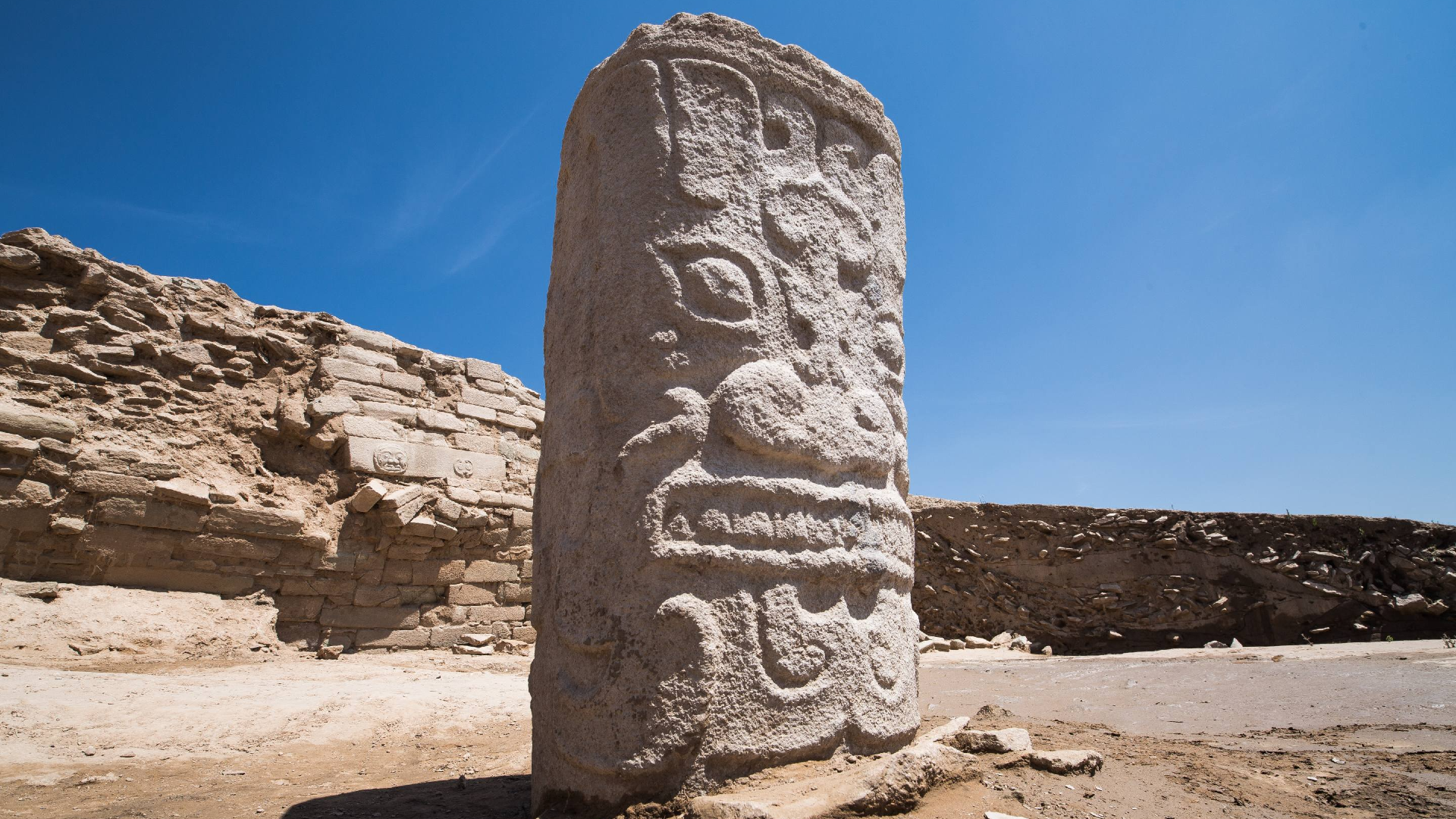World's biggest X-ray laser discovers never-before-seen type of ice that's solid at room temperature
Researchers have unveiled ice XXI, a new form of ice that's solid at room temperatures when subjected to immense pressure.

Scientists have squeezed water between two diamonds to create an entirely new form of ice that's solid at room temperature.
The ice, named ice XXI, forms when water is subjected to extreme pressure to become metastable — a precarious state that is made physically unstable by the slightest disturbance.
The researchers created ice XXI by supercompressing water between two diamonds and detected it with the European X-Ray Free-Electron Laser (XFEL), the world's largest X-ray laser. The team found that the supercompressed water structurally changes from a high-density state to a very-high-density state.
The finding could have implications for space exploration, opening up new ways that ice could potentially form on alien worlds, according to the study published Oct. 10 in the journal Nature Materials.
"Our findings suggest that a greater number of high temperature metastable ice phases and their associated transition pathways may exist, potentially offering new insights into the composition of icy moons," study co-author Rachel Husband, a postdoctoral researcher at the German Electron Synchrotron research center in Germany, said in a statement.
Ice XXI, the number 21 in Roman numerals, is the 21st known ice phase — others include the four-sided crystals of ice XIX and star-hot superionic ice. Water can exist in a plethora of solid phase forms thanks to its molecular structure, with its two-pronged hydrogen atoms freezing into varying crystalline and amorphous structures.
Scientists have found many water-ice transition pathways by applying pressure to water at low temperatures, when molecules are slower, but they expect less ice diversity at higher temperatures, when the molecules have more kinetic energy.
Get the world’s most fascinating discoveries delivered straight to your inbox.
In the new study, the researchers explored ice transition pathways at room temperature, which is around 72 degrees Fahrenheit (22 degrees Celsius). The team used a diamond anvil cell, a device that takes advantage of the extreme hardness of diamonds to subject materials to immense pressure. In this case, water was subjected to pressures of around 20,000 times that of normal air on Earth, forcing H2O molecules together until they were so compact they formed a solid structure. The XFEL scanned the sample every one millionth of a second (1 microsecond), tracking how its structure changed.
"With the unique X-ray pulses of the European XFEL, we have uncovered multiple crystallization pathways in H2O which was rapidly compressed and decompressed over 1,000 times using a dynamic diamond anvil cell," study co-author Geun Woo Lee, a researcher at the Korea Research Institute of Standards and Science (KRISS), said in the statement.

Patrick Pester is the trending news writer at Live Science. His work has appeared on other science websites, such as BBC Science Focus and Scientific American. Patrick retrained as a journalist after spending his early career working in zoos and wildlife conservation. He was awarded the Master's Excellence Scholarship to study at Cardiff University where he completed a master's degree in international journalism. He also has a second master's degree in biodiversity, evolution and conservation in action from Middlesex University London. When he isn't writing news, Patrick investigates the sale of human remains.
You must confirm your public display name before commenting
Please logout and then login again, you will then be prompted to enter your display name.


